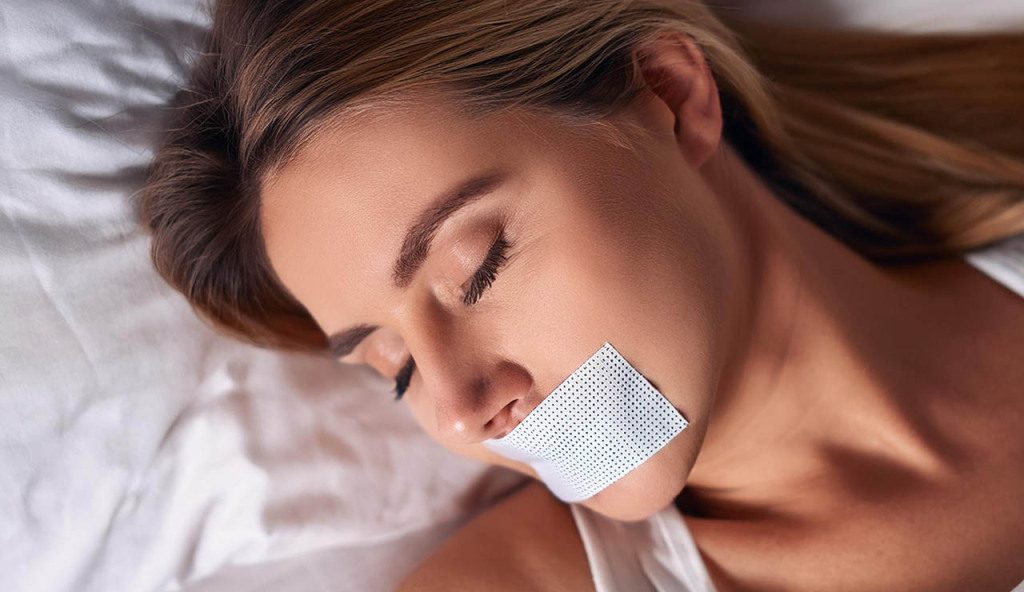Mouth taping has gained popularity as a supposed solution for better sleep, fresher breath, and improved oral health. But does it really work, or is it just another wellness trend?
In this article, we’ll explore the science behind mouth taping, its potential benefits, risks, and whether you should try it.
What Is Mouth Taping?
It involves placing a piece of gentle, skin-safe tape over the lips before bed to encourage nasal breathing while sleeping.
The idea is that breathing through your nose is healthier than mouth breathing, which can lead to dry mouth, bad breath, and even dental issues.
Why Do People Mouth Tape?
Supporters claim that it helps with:
✔ Preventing Dry Mouth & Bad Breath – Mouth breathing can lead to dehydration and bacterial overgrowth.
✔ Reducing Snoring & Sleep Apnea Symptoms – Encouraging nasal breathing may help some people sleep more soundly.
✔ Improving Oxygen Intake – Nasal breathing filters and humidifies the air better than mouth breathing.
✔ Protecting Teeth & Gums – Mouth breathing can contribute to cavities, gum disease, and enamel erosion due to a lack of saliva.
Mouth Breathing vs. Nasal Breathing: Why It Matters
🔹 Mouth Breathing: Leads to dry mouth, increased plaque buildup, bad breath, and a higher risk of cavities.
🔹 Nasal Breathing: Helps maintain proper saliva production, reduces oral bacteria, and supports overall oral health.
Does Science Support Mouth Taping?
While research is still limited, some studies suggest that nasal breathing may improve sleep quality and oral health.
However, there is no direct scientific proof that mouth taping alone prevents dental problems.
🔸 A study published in the Journal of Clinical Sleep Medicine found that nasal breathing helps reduce snoring and improve sleep.
🔸 The American Dental Association (ADA) acknowledges that mouth breathing is linked to dry mouth and cavities, but does not officially endorse mouth taping.
Potential Risks
🚨 Not for Everyone – People with nasal congestion, allergies, or sleep apnea should consult a doctor before trying it.
🚨 Breathing Obstruction – Improper taping could block airflow and make breathing difficult.
🚨 Skin Irritation – Some people may develop irritation or allergic reactions from the tape.
How to Try Mouth Taping Safely
✔ Use Skin-Safe Tape – Medical-grade or hypoallergenic tape is best. Avoid duct tape or anything too strong!
✔ Test Your Nasal Breathing First – Make sure you can breathe easily through your nose before taping.
✔ Start Slow – Try it for short periods while awake before sleeping with it.
✔ Consult a Dentist or Doctor – If you have sleep apnea, allergies, or chronic nasal congestion, get professional advice first.
Conclusion: Trend or Truth?
It may encourage healthier breathing habits, which can benefit oral health. However, it’s not a magic fix, and more research is needed to confirm its long-term effects.
If you’re experiencing dry mouth, bad breath, or dental issues, it’s best to consult a dentist to address the root cause rather than relying solely on mouth taping.
Frequently Asked Questions (FAQ)
1. Does mouth taping actually work?
It can encourage nasal breathing, which may improve sleep and oral health, but it is not a guaranteed solution for everyone.
2. Can mouth taping fix bad breath?
It may help by preventing dry mouth, but addressing the root causes of bad breath—like poor oral hygiene or diet—is essential.
3. Is mouth taping safe?
For healthy individuals, it is generally safe if done correctly. However, those with nasal congestion, allergies, or sleep apnea should avoid it or consult a doctor.
4. Can mouth taping help with snoring?
For some people, yes. Encouraging nasal breathing may reduce snoring, but it is not a cure for sleep apnea.
5. What tape should I use for mouth taping?
Always use hypoallergenic, medical-grade tape designed for sensitive skin. Avoid harsh adhesives.
















